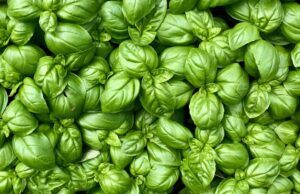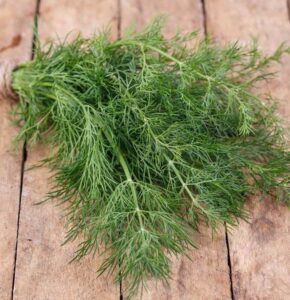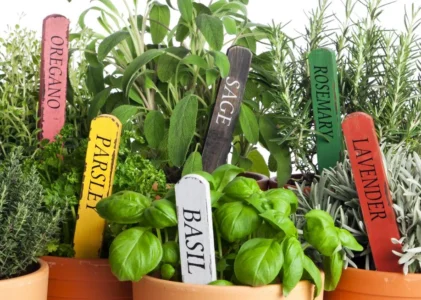Herbs have been used for culinary purposes for centuries, and their importance in cooking cannot be overstated. Herbs are different from spices, which come from the roots, dried bark, buds, seeds, fruits, or berries of plants and trees that grow in the tropics. In contrast, herbs come from the leaves of plants, and they are typically used fresh or dried to add flavor to a variety of dishes. Commonly used herbs in cooking include basil, thyme, rosemary, sage, mint, and dill. Herbs not only add flavor to dishes but also provide numerous health benefits, making them a valuable addition to any diet.
The use of herbs in cooking has a long cultural legacy, and they have been used for culinary, medicinal, and even religious purposes. In fact, there are over 200 books on cooking with herbs and flowers in the Herb Society of America’s library. Thyme, for instance, is a great herb to grow since it can be used fresh or dried for later use and added at the beginning of the cooking process to enhance the flavor of dishes. Experimenting with different herbs can completely uplevel dishes and provide a new twist to traditional recipes.

Incorporating herbs into cooking can be a fun and creative way to add flavor and depth to dishes. Whether you grow your own herbs in a garden or purchase them at a farmers’ market or grocery store, there are endless possibilities for using herbs in cooking. From adding fresh basil to a homemade pizza to using dried rosemary to flavor roasted vegetables, herbs can transform any dish into a culinary masterpiece. By exploring the culinary uses of herbs, individuals can elevate their cooking skills and enjoy the many health benefits that herbs have to offer.
Growing and harvesting herbs for culinary purposes
Growing and harvesting herbs for culinary purposes can be a rewarding experience for any home cook. To start, it is important to choose the right location and soil for your herbs. Most herbs require rich, moist soil that is well-drained and moderately fertile. Additionally, herbs thrive in sunny locations, so it is important to choose a spot in your garden that receives plenty of sunlight. If you don’t have access to a garden, herbs can also be grown in containers. There are many resources available to help you select and plant the right herbs for your needs, including books and online guides.

Once your herbs have been planted, it is important to know when and how to harvest them. Culinary herbs are typically harvested when they are young and tender, just before the plant begins to flower. Herbs can be harvested by cutting the stems just above a set of leaves, which will encourage the plant to produce new growth. It is also important to properly store your harvested herbs to maintain their flavor and freshness. Drying herbs is a popular method of preservation and can be done by hanging the herbs upside down in a dry, well-ventilated area.
Finally, incorporating herbs into your cooking can add a new dimension of flavor to your dishes. Some popular culinary herbs include basil, thyme, rosemary, and parsley. Fresh herbs can be used in a variety of dishes, from salads to soups to marinades. Dried herbs are also a great option and can be used in many recipes, including rubs and spice blends. Before using your herbs, be sure to wash them thoroughly to remove any dirt or insects. With a little bit of knowledge and effort, growing and harvesting herbs can add a new level of flavor to your cooking and enhance your culinary experience.
Culinary uses of herbs in different cuisines
Herbs are an essential component of many cuisines around the world. In Mediterranean cuisine, herbs such as basil, chervil, dill, fennel, and rosemary are commonly used to add flavor to dishes. Rosemary, for example, is often paired with olive oil to flavor vegetables and kebabs, while basil is used in pesto and tomato-based sauces. The Mediterranean Herb Cookbook by Georgeanne Brennan features 120 simple yet flavorful recipes that incorporate herbs into dishes ideal for busy schedules. Incorporating these herbs into one’s cooking can add depth and complexity to dishes while also providing potential health benefits.

Asian cuisine also heavily relies on the use of herbs and spices to add flavor to dishes. Cilantro, for example, is a staple herb in many Asian cuisines and is used generously in soups, curry sauces, and stir-fried dishes. Other commonly used herbs in Asian cuisine include basil, ginger, lemongrass, and mint. Experimenting with these herbs in cooking can lead to a deeper understanding and appreciation of the diverse flavors found in Asian cuisine.
Mexican cuisine is known for its bold and vibrant flavors, which are achieved through the use of a diverse range of herbs and spices. Cilantro, along with other herbs such as oregano and epazote, is a staple in Mexican cooking, adding freshness and depth to dishes. Fresh ingredients are also highly valued in Mexican cuisine, with the use of fresh herbs and spices providing health benefits and enhancing the overall flavor of dishes. Incorporating these herbs into Mexican-inspired dishes can add a unique twist to traditional recipes and elevate the overall flavor profile.

